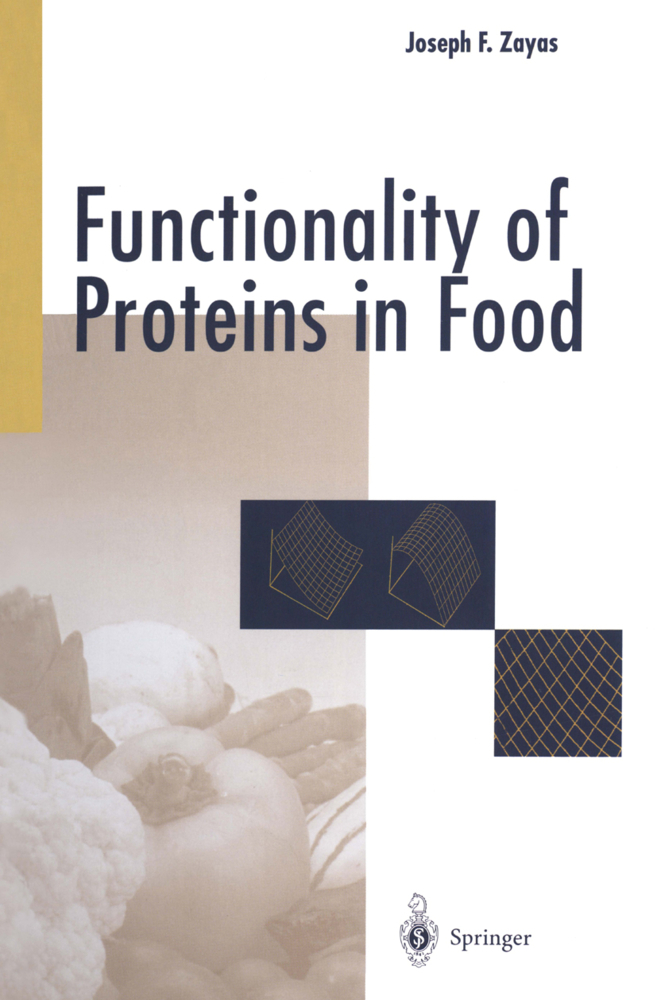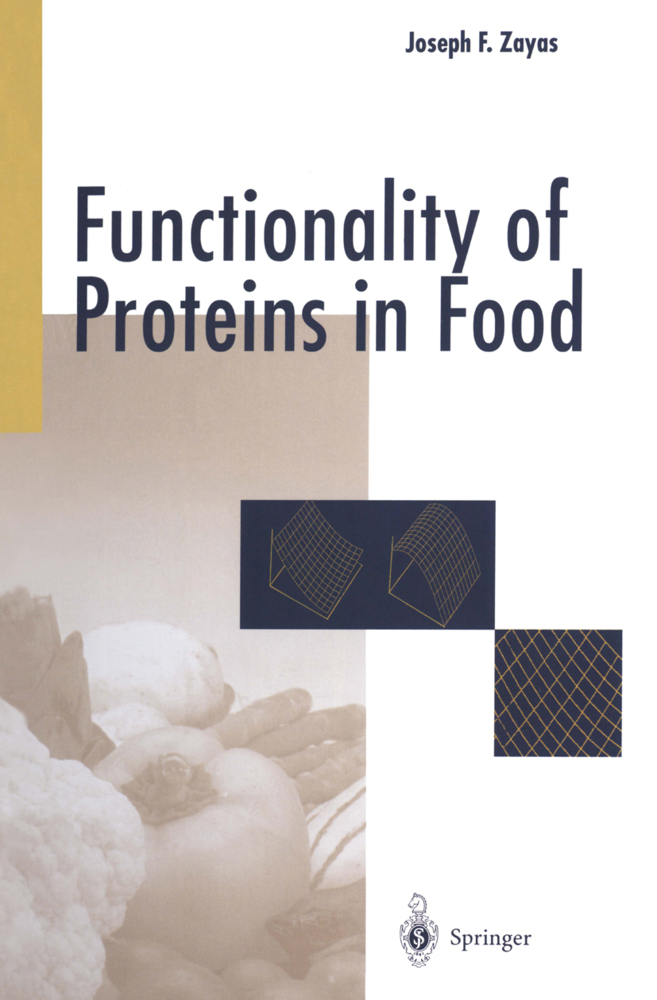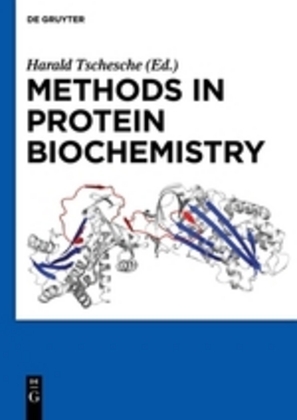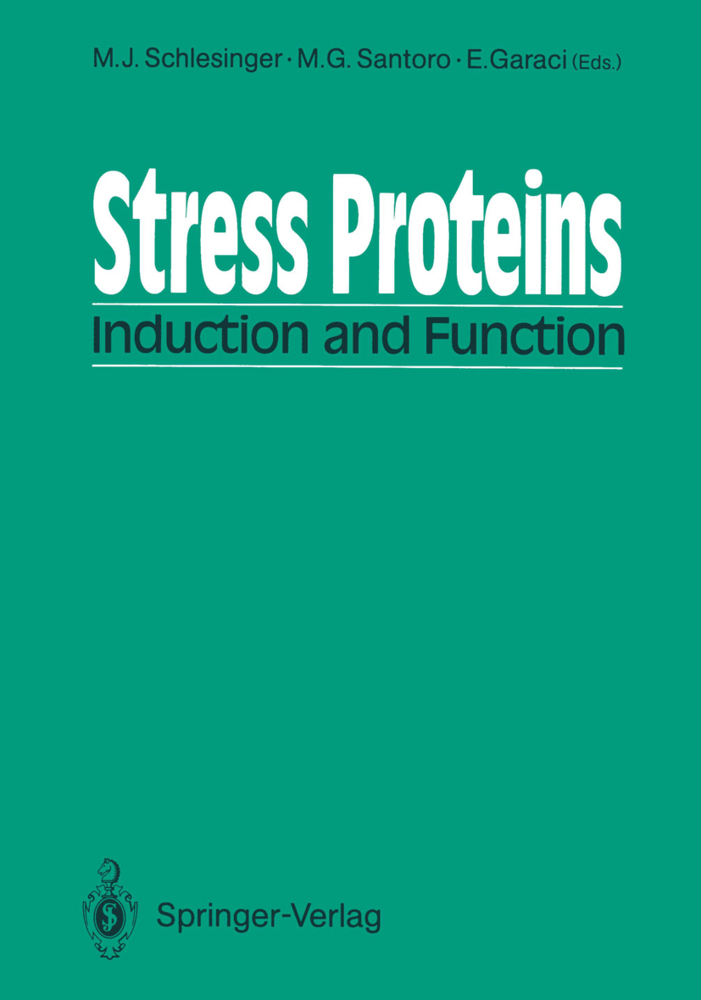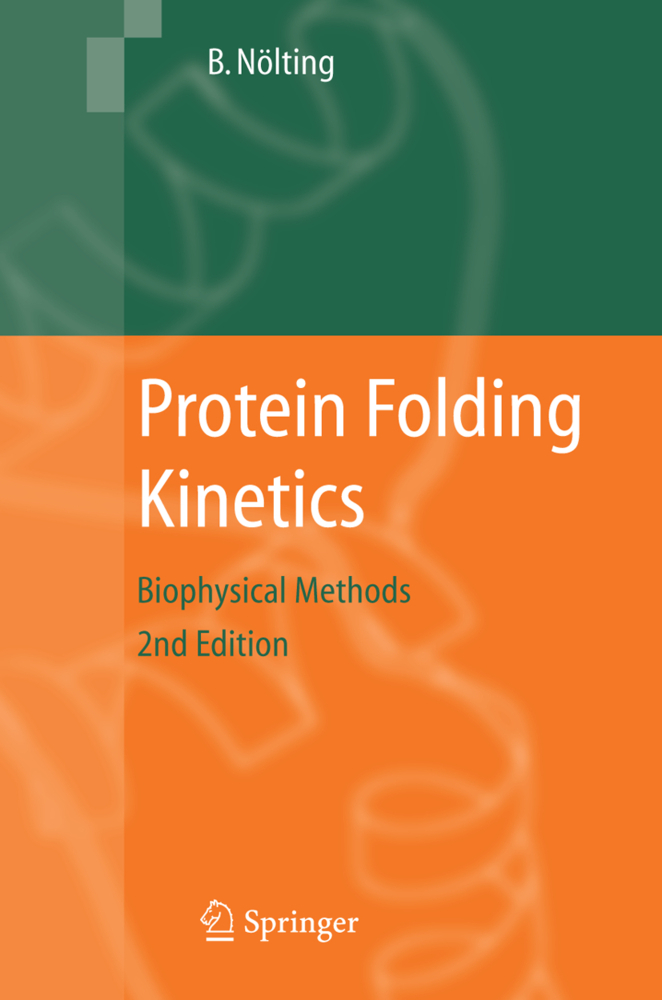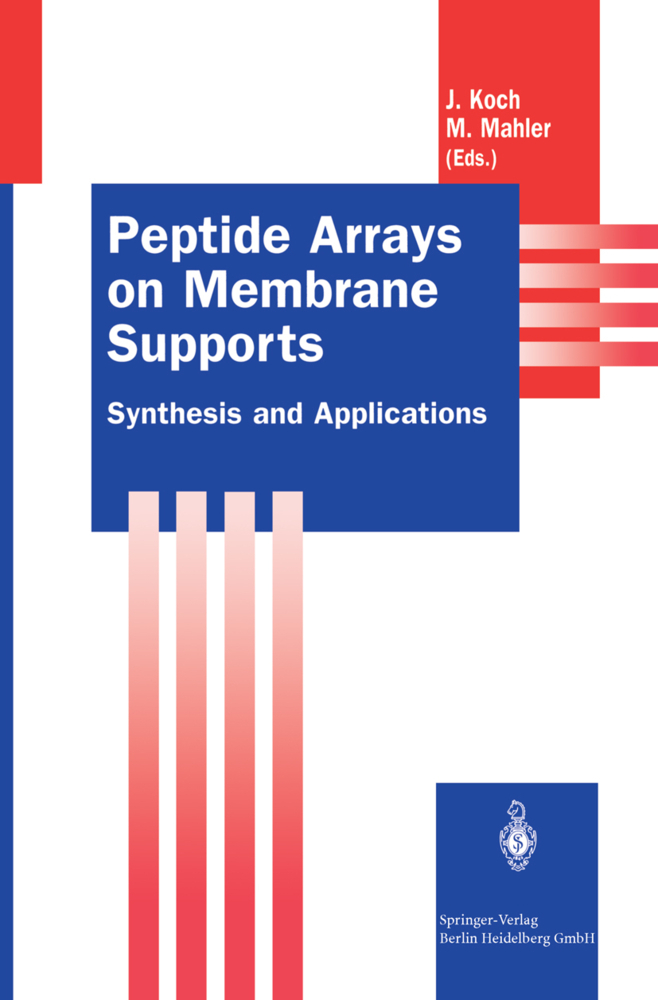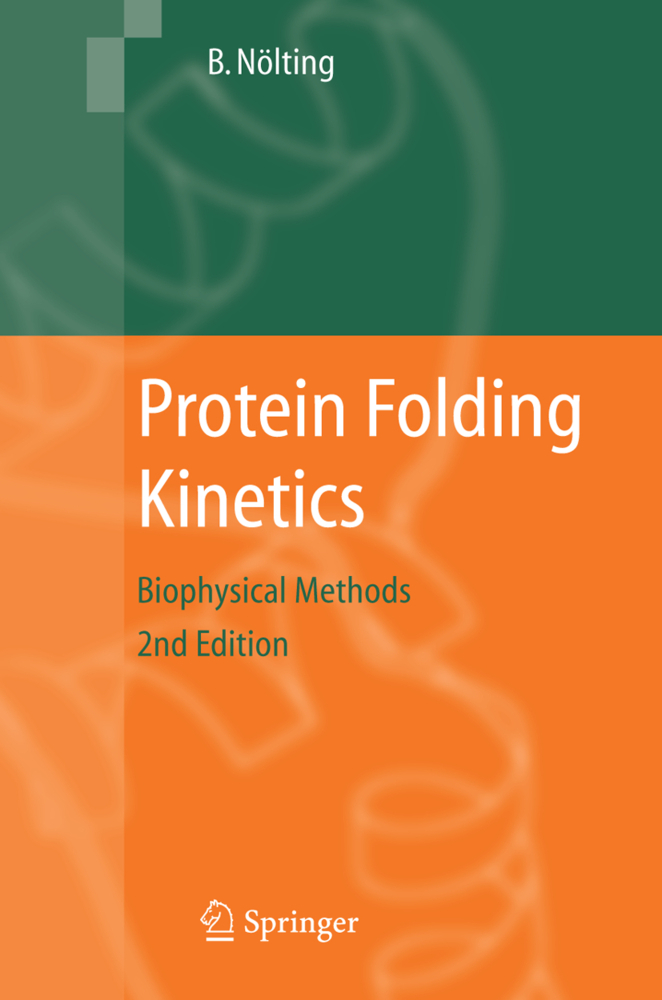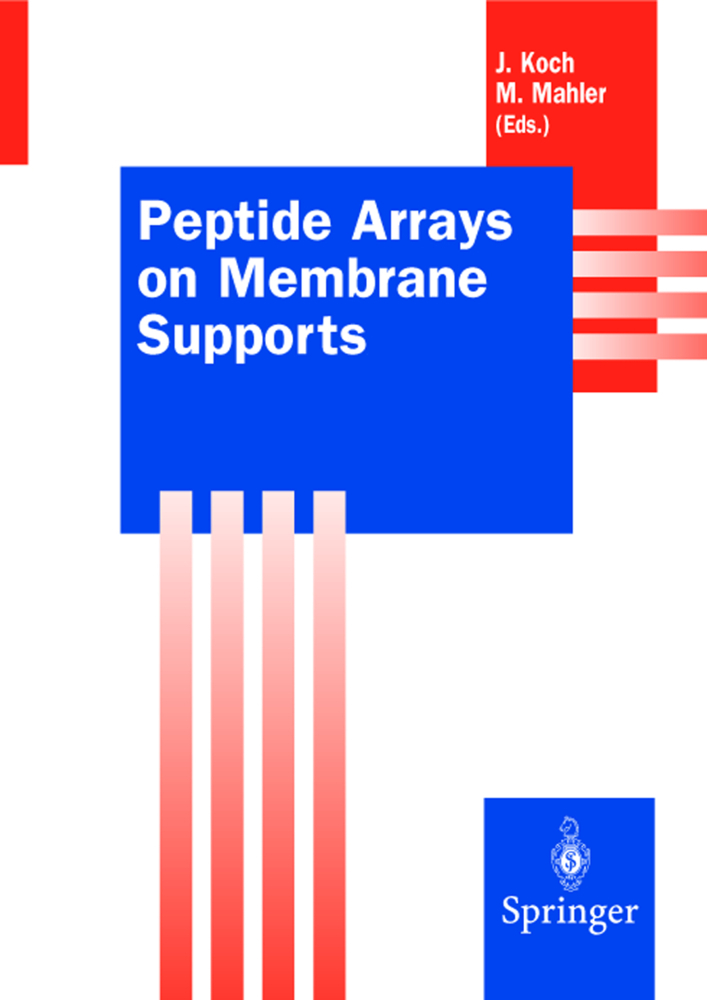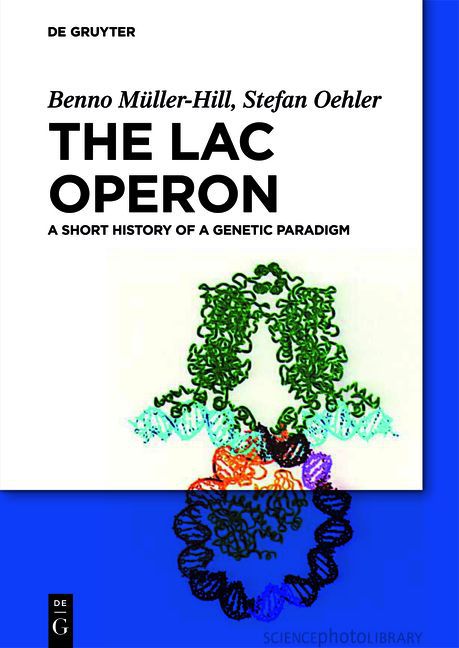Functionality of Proteins in Food
Functionality of Proteins in Food
The book is devoted to expanding current views on the phenomena of protein functionality in food systems. Protein functionalities in foods have been the object ofextensive research over the last thirty to forty years and significant progress has been made in understanding the mechanism and factors influencing the functionality of proteins. The functionality of proteins is one of the fastest developing fields in the studies of protein utilization in foods. Currently, a broad spectrum of data related to protein functionality in food systems has been collected, however, much more needs to be known. In this volume, the most important functional properties offood proteins are presented: Protein solubility, water holding capacity and fat binding, emulsifying, foaming, and gelling properties as affected by protein source, environmental factors (pH, temperature, ionic strength) and protein concentration; Relationships between protein conformation, physicochemical properties, and functional properties; Protein functional properties as influenced by various food processing conditions, particularly heat treatment, dehydration, freezing and storage when frozen, extraction and other processes; Effects ofprotein modification on the enhancementofprotein functionality; Utilization ofvarious proteins in improving functional properties in food systems. Those aspects of protein functionality are presented which the author believes to be interesting and most important for protein utilization in food systems. The book is recommended to students and food scientists engaged in food protein research and food industry research, and development scientists. Table ofContents Introduction 1 References 5 Chapter 1 Solubility ofProteins. . . . . . . . . . . . . . . . . . . . . . . . . . . . . . . . .. . . . . . . . . 6 1. 1 Introduction. . . . . . . . . . . . . . . . . . . . . . . . . . . . . . . . . . . . . . . . . . . . . . . . . . . . . . . . . . . . . 6 1. 1. 1 Factors Affecting Solubility ofProteins. . . . . . . . . . . . . . . . . . . . . . . .
1.1 Introduction
1.2 Solubility of Meat and Fish Proteins
1.3 Solubility of Milk Proteins
1.4 Solubility of Egg Proteins
1.5 Solubility of Plant Proteins
References
2 Water Holding Capacity of Proteins
2.1 Introduction
2.2 The Mechanism of Protein-Water Interaction
2.3 Water Holding Capacity of Proteins in Meat and Meat Products
2.4 Water Holding Capacity of Milk Proteins
2.5 Water Holding Capacity of Egg Proteins
2.6 Water Holding Capacity of Plant Proteins
References
3 Emulsifying Properties of Proteins
3.1 Introduction
3.2 Hydrophobic and Hydrophilic Properties of Proteins
3.3 Interfacial Film Formation and Properties
3.4 Factors Affecting the Emulsifying Properties of Proteins
3.5 Emulsion Stability
3.6 Measuring Emulsifying Properties
3.7 Emulsifying Properties of Meat Proteins and Proteins Utilized as Extenders in Meat Products
3.8 Functionality of Nonmeat Proteins in Comminuted Meats
3.9 Milk Proteins as Emulsifiers in Food Systems
3.10 Emulsifying Properties of Egg Proteins
3.11 Emulsifying Properties of Plant Proteins
References
4 Oil and Fat Binding Properties Of Proteins
4.1 Introduction
4.2 Fat Binding Properties of Proteins of Animal Origin
4.3 Fat Binding Properties of Proteins of Plant Origin
References
5 Foaming Properties of Proteins
5.1 Introduction
5.2 The Mechanism of Foam Formation
5.3 Milk Proteins
5.4 Egg Proteins
5.5 Blood Proteins and Gelatin
5.6 The Foaming Properties of Plant Proteins
References
6 Gelling Properties of Proteins
6.1 Introduction
6.2 The Mechanism of Protein Gel Formation
6.3 Gelling Properties of Meat Proteins
6.4 Gelling Properties of Milk Proteins
6.5 Gelling Properties of Egg Proteins
6.6 Gelling Properties of Soy Proteins
References.
References
1 Solubility of Proteins1.1 Introduction
1.2 Solubility of Meat and Fish Proteins
1.3 Solubility of Milk Proteins
1.4 Solubility of Egg Proteins
1.5 Solubility of Plant Proteins
References
2 Water Holding Capacity of Proteins
2.1 Introduction
2.2 The Mechanism of Protein-Water Interaction
2.3 Water Holding Capacity of Proteins in Meat and Meat Products
2.4 Water Holding Capacity of Milk Proteins
2.5 Water Holding Capacity of Egg Proteins
2.6 Water Holding Capacity of Plant Proteins
References
3 Emulsifying Properties of Proteins
3.1 Introduction
3.2 Hydrophobic and Hydrophilic Properties of Proteins
3.3 Interfacial Film Formation and Properties
3.4 Factors Affecting the Emulsifying Properties of Proteins
3.5 Emulsion Stability
3.6 Measuring Emulsifying Properties
3.7 Emulsifying Properties of Meat Proteins and Proteins Utilized as Extenders in Meat Products
3.8 Functionality of Nonmeat Proteins in Comminuted Meats
3.9 Milk Proteins as Emulsifiers in Food Systems
3.10 Emulsifying Properties of Egg Proteins
3.11 Emulsifying Properties of Plant Proteins
References
4 Oil and Fat Binding Properties Of Proteins
4.1 Introduction
4.2 Fat Binding Properties of Proteins of Animal Origin
4.3 Fat Binding Properties of Proteins of Plant Origin
References
5 Foaming Properties of Proteins
5.1 Introduction
5.2 The Mechanism of Foam Formation
5.3 Milk Proteins
5.4 Egg Proteins
5.5 Blood Proteins and Gelatin
5.6 The Foaming Properties of Plant Proteins
References
6 Gelling Properties of Proteins
6.1 Introduction
6.2 The Mechanism of Protein Gel Formation
6.3 Gelling Properties of Meat Proteins
6.4 Gelling Properties of Milk Proteins
6.5 Gelling Properties of Egg Proteins
6.6 Gelling Properties of Soy Proteins
References.
Zayas, Joseph F.
| ISBN | 978-3-540-60252-1 |
|---|---|
| Artikelnummer | 9783540602521 |
| Medientyp | Buch |
| Copyrightjahr | 1996 |
| Verlag | Springer, Berlin |
| Umfang | X, 373 Seiten |
| Abbildungen | X, 373 p. |
| Sprache | Englisch |

